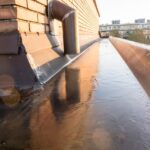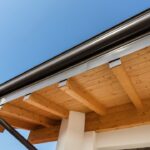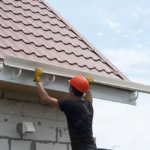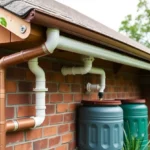Homeowners often ponder the question: should roof vent pipe be covered? Understanding this topic is crucial for maintaining a well-functioning and safe home. The vent pipe plays a vital role in your household plumbing system, helping to ensure that wastewater moves effectively through the pipes without causing any disruptions or unwanted odors. But what about covering the vent pipe? In this article, we explore the various factors that influence the decision of whether or not to cover your roof vent pipe.

What is a Roof Vent Pipe?
A roof vent pipe, also known as a plumbing vent or vent stack, serves a very specific purpose. It allows sewer gases to escape from the drainage system while also permitting fresh air to enter, which helps water flow out of the home properly. Typically extending from the plumbing system through the roof, the vent pipe maintains atmospheric pressure within the pipes, allowing for effective drainage and the prevention of harmful sewer gas buildup inside the home.
The Importance of a Properly Functioning Vent Pipe
Ensuring your vent pipe functions correctly is crucial for preventing plumbing issues. It provides critical ventilation for the drain-waste-vent system (DWV). Without it, wastewater and sewage could not move efficiently through your home. Moreover, a well-functioning vent pipe helps prevent potentially harmful sewer gases from penetrating your living space, which could create unpleasant odors or even dangerous health conditions.
How Vent Pipes Work
The vent pipes work by equalizing pressure in the drainage system. Each time water flows down a drain, it displaces air trapped in the lines. The vent pipe is designed to release this air with minimal disruption to water flow and helps prevent the occurrence of gurgling sounds in the pipes.
Should You Cover Your Roof Vent Pipe?
The question should roof vent pipe be covered arises in various circumstances, such as avoiding blockages caused by debris or animals. Here are some points to consider when making this decision:
Reasons To Cover Your Vent Pipe
- To prevent debris accumulation: Covering prevents leaves, dirt, or snow from entering the pipe.
- To stop animal intrusion: Birds or rodents sometimes seek shelter in vent pipes, causing blockages.
Potential Drawbacks of Covering
- Risk of improper ventilation: Complete blockage can result in improper airflow and cause plumbing issues.
- Winter-related problems: If the vent pipe is covered by ice or snow, it can lead to pressure build-up.
Types of Vent Pipe Covers
Choosing the right cover for your vent pipe is essential. Common options include:
Mesh Guards
Mesh guards provide effective prevention against debris and animals while ensuring airflow is not obstructed.
Flat Caps
Flat caps can shield the pipe from rain and snow while still providing ample ventilation.
Installation Tips for Roof Vent Covers
To ensure efficient protection, here is how you can install vent pipe covers:
- Use materials that are resistant to extreme weather conditions.
- Secure the cover to prevent it from being blown away by strong winds.
Maintaining Your Roof Vent Pipe
Proper maintenance of your roof vent pipe involves regular inspection and cleaning:
- Check for any signs of damage or debris build-up.
- Schedule regular inspections, especially before winter.
Further, learn more about maintaining your roof with options like roofing materials guide.
Safety Tips
When working on your roof, prioritize safety:
- Always use a stable ladder.
- Wear appropriate protective gear to prevent falls.
Professional Help for Vent Pipe Covering
If you’re unsure about covering your roof vent pipe and its implications, it might be beneficial to seek expert advice. Hiring a professional can ensure that the job is done safely and correctly, minimizing potential risks or future plumbing problems. Consider consulting from sources like Roofing Calculator for expert guidance.
Conclusion
So, should roof vent pipe be covered? It depends on your specific circumstances. Covering can be beneficial in preventing blockages from debris and wildlife, but it’s essential that airflow remains uninterrupted. Make an informed decision based on the factors outlined and consult with professionals if necessary.
For more detailed information on roof maintenance, explore topics like EPDM Roofing Guide.

FAQs
1. What materials are ideal for vent pipe covers?
Materials that are weather-resistant and durable, such as stainless steel or high-quality plastic, are ideal for vent pipe covers.
2. Can covering a vent pipe cause issues?
If the cover obstructs airflow or completely blocks the pipe, it could lead to ventilation issues in the plumbing system.
3. How often should roof vent pipes be inspected?
Regular inspections, at least every six months, can prevent blockages and ensure proper function of the vent pipe.
This article contains affiliate links. We may earn a commission at no extra cost to you.








